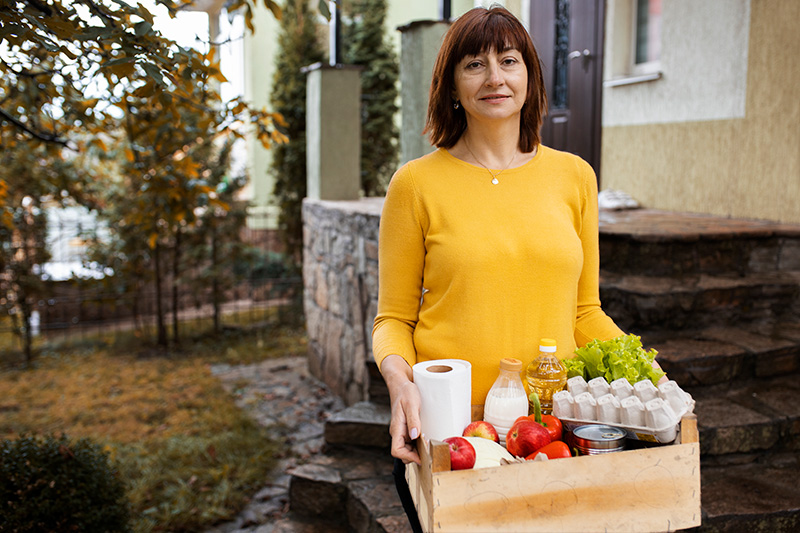Community Liaison | Blog
Who is coming to the Calgary Food Bank?

Food insecurity is a complex social issue that impacts people from all walks of life. Food insecurity is defined as having insecure or inadequate access to food due to financial constraints. These financial constraints can come in the form of job loss, family breakdown, or environmental disasters, for example. In the 1980s, food banks were created as a temporary form of support that take away the stress of wondering where one’s next meal would come from. Fourty years later, food banks continue to be critical for many. Here is what we know about people who access the Calgary Food Bank.
70% of our client base receives an average of 2 hampers per year. This represents 34% of the hampers we distribute. These folks are most likely to report receiving a wage from employment. 28% of all folks coming to the food bank reported wage as their primary income source, which suggests that employment is no longer a way out of poverty. According to The HungerCount, released by Food Banks Canada, Alberta has the highest number of working poor (Food Banks Canada, 2022, p. 31). Calgary also has one of the highest rates of income inequality, according to Statistics Canada (2022).
25% of our client base access the Calgary Food Bank 7.5 times per year. This represents 43% of the hampers distributed. It is important to note that these statistics were calculated after we adjusted our policies to allow folks to access the Calgary Food Bank as long as there are 10 days between hampers, with no annual limit to the number of hampers they can receive. Even with limitations around frequency of access removed, we do not see the majority of clients receiving hampers every 10 days, or even on a monthly basis.
6% of our client base come to the Calgary Food Bank an average of 17 times per year. This represents 23% of the hampers distributed and some of the most vulnerable populations in the city. Perceptions that food banks create dependency, rather than meeting immediate necessities negatively contribute to the stigma surrounding people who access food bank support. People experiencing food insecurity are resilient and resourceful in meeting their basic needs. Food Banks Canada reflects on this perception of dependency, highlighting that “…the majority of people want to better themselves and their lives, and will use the help that is available to them only for as long as they need it” (2014, p.3).
People who access the Calgary Food Bank often rely on government social assistance programs (ie. AISH), which are not always adjusted to the cost of living and have strict rules regarding supplementing income. Further, 40% of our hampers are distributed to single person households. This highlights the lack of support available for single adults in the midst of inflation, characterized by rising food and housing costs. Additionally, over 30% of people who come to the Calgary Food Bank are younger than 17 (Calgary Food Bank, 2022).
While food banks do provide temporary relief and are critical to meeting the immediate need, it is important to remember that access to food is a human right, which means “the physical and economic access to food at all times to adequate food or means for its procurement” (Food Secure Canada, 2013, para. 3) All people deserve to have the ability to access food that meets their unique needs. Policy that supports the economic wellbeing of all people is critical to ensuring a hunger free community. Check out some of the policy recommendations by Food Banks Canada: https://hungercount.foodbankscanada.ca/policies.php.
Calgary Food Bank. (2022). Annual report. https://www.calgaryfoodbank.com/annualreport/
Food Banks Canada. (2014). Food banks and the dependence myth. https://fbcblobstorage.blob.core.windows.net/wordpress/2022/02/Food-Banks-and-the-Dependence-Myth_final.pdf
Food Banks Canada. (2022). Hungercount 2022: From storm to a hurricane. https://hungercount.foodbankscanada.ca/
Statistics Canada. (2022). Income inequality highest in Toronto, Calgary, and Vancouver. [Infographic]. https://www150.statcan.gc.ca/n1/daily-quotidien/220713/g-d007-eng.htm



